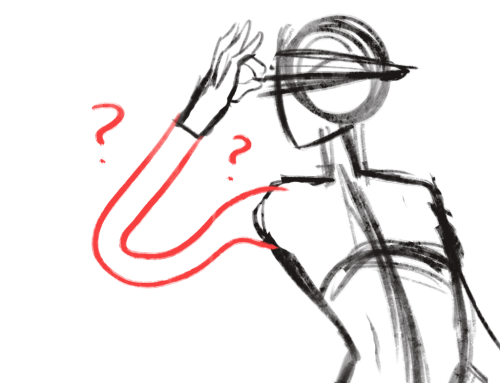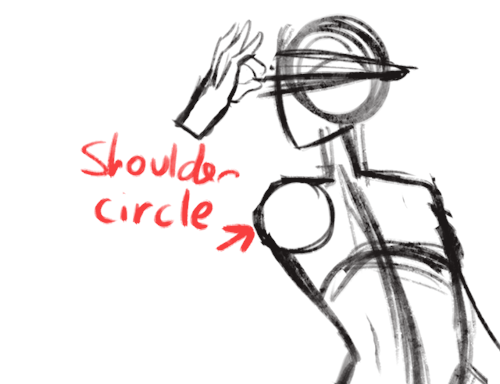Image ID: A Close-up Picture Of A Spider. It’s Looking Up At The Person Taking The Photo With Its Head
Image ID: a close-up picture of a spider. It’s looking up at the person taking the photo with its head tilted. It’s mostly mottled brown with two iridescent green patches on the front of its head. It has 4 round eyes, with the center pair being larger than the outer two. You can kind of see a silhouette of a person in the reflection of its eyes. It has little tufts of hair all of its body, with two larger tufts on either side of its head. Frankly, it’s adorable. /End ID

Bold Jumping Spider (Phidippus audax)
March 27, 2023
Southeastern Pennsylvania
More Posts from Goblin-in-the-rain and Others
crowded arena starts chanting: ZO-RAP-TERA *clap-clap-clapclapclap* ZO-RAP-TERA
An excellent pine log had a small colony of angel insects. I was pleased. 🤍
7/17/23. N. Florida





So cute
Made by https://paperbeatsscissors.tumblr.com/
the paralyzed cicadas I picked up from a failed cicada killer nest are the perfect material to show off some cool features of insect anatomy! (although the wasp’s venom would keep them alive for her larvae to eat, I froze them to make sure they’re fully dead for dissection).
cicadas are powerful, fast fliers, and all of their thorax is taken up by a bulk of reddish, stringy flight muscles, which I’ll talk more about later. this cicada is a female, so her abdomen is full of white, elongated eggs that she will insert into tree bark with the bladed ovipositor at her rear.


the male cicada’s abdomen, however, is almost entirely empty, and that air-filled space is used as a resonator for his loud calls. the biggest structure visible there is a curved pair of muscles that deforms the tymbals, producing a click with every contraction.


here's a view of the complete muscle, and the tymbals themselves which look like overlapping plates on his belly. if you're curious what the white frosted appearance is, some Neotibicen have a coat of waxy powder or pruinescence; this male N. tibicen is particularly pruinose.
onto the flight muscles:
powered flight is a pretty complex mechanism in any organism, and is never so simple as just flapping wings up and down, but most insects power their flight in a really unintuitive way (at least for us vertebrates): they contract muscles in their thorax that aren’t even attached to the wings!
this method of flight is called indirect flight, in contrast to the direct flight of the dragonflies and mayflies where each of four wings is directly attached to a muscle and can flap on its own.


instead, most insects have a longitudinal (image 1 above, d below) pair and a vertical (2, c) pair of muscles that deform the shape of abdomen, pulling the upper segment of the thorax (notum) up and down, and this moves the wings which are attached to the notum. useful indirect flight gif from wikipedia found here

even if compressed manually, the dead cicadas "flap" their wings due to the motion of the notum:

insect flight is a lot more complicated than this simplified look at them, but I think these cicadas offer a pretty good look at how most insects get around essentially by squishing themselves internally!








Fata Morgana
a superior mirage caused by warm air resting on patches of colder air in an atmospheric duct that acts like a refracting lens. Objects on the horizon could appear to be mirrored, distorted, or float. This form of mirage could be the reason for the Flying Dutchman Legend.
Moth Of The Day #112
Clouded Silver
Lomographa temerata
From the geometridae family. They have a wingspan of 22-30 mm. They tend to inhabit gardens, hedgerows, fens and woodland. They can be found in most of Europe.




how to draw arms ? ?
ATTENTION: you WILL look at penny.

thank you citizen, she has been sufficiently looked at. have a good day.

Rainbow Scarab (Phanaeus vindex), male, family Scarabaeidae, Pennsylvania, USA
a species of "true dung beetle".
photograph by Michael Reed
-
 justanoldfashiontumblog liked this · 3 months ago
justanoldfashiontumblog liked this · 3 months ago -
 ladyinsertnamehere reblogged this · 1 year ago
ladyinsertnamehere reblogged this · 1 year ago -
 ladyinsertnamehere liked this · 1 year ago
ladyinsertnamehere liked this · 1 year ago -
 rayniedae liked this · 1 year ago
rayniedae liked this · 1 year ago -
 magicalhats22 liked this · 1 year ago
magicalhats22 liked this · 1 year ago -
 paranormeow7 liked this · 1 year ago
paranormeow7 liked this · 1 year ago -
 batwritersareawesome liked this · 1 year ago
batwritersareawesome liked this · 1 year ago -
 goblin-in-the-rain reblogged this · 1 year ago
goblin-in-the-rain reblogged this · 1 year ago -
 sylvianne liked this · 1 year ago
sylvianne liked this · 1 year ago -
 rustedskyprisms liked this · 1 year ago
rustedskyprisms liked this · 1 year ago -
 pixelcurious liked this · 1 year ago
pixelcurious liked this · 1 year ago -
 dustyrayine liked this · 1 year ago
dustyrayine liked this · 1 year ago -
 wildernestt reblogged this · 1 year ago
wildernestt reblogged this · 1 year ago -
 burrichigos liked this · 1 year ago
burrichigos liked this · 1 year ago -
 ferdous-khan-parvez-blog liked this · 1 year ago
ferdous-khan-parvez-blog liked this · 1 year ago -
 i-am-simply-here liked this · 1 year ago
i-am-simply-here liked this · 1 year ago -
 surgikos liked this · 1 year ago
surgikos liked this · 1 year ago -
 grigadf liked this · 1 year ago
grigadf liked this · 1 year ago -
 strawberry-sufferer liked this · 2 years ago
strawberry-sufferer liked this · 2 years ago -
 myteetharewhitewithsin liked this · 2 years ago
myteetharewhitewithsin liked this · 2 years ago -
 grumpyirath liked this · 2 years ago
grumpyirath liked this · 2 years ago -
 mlleclaudine reblogged this · 2 years ago
mlleclaudine reblogged this · 2 years ago -
 sigelmonn liked this · 2 years ago
sigelmonn liked this · 2 years ago -
 eon-of-axolotls liked this · 2 years ago
eon-of-axolotls liked this · 2 years ago -
 pacaldev liked this · 2 years ago
pacaldev liked this · 2 years ago -
 shriveledradish liked this · 2 years ago
shriveledradish liked this · 2 years ago -
 titil0 liked this · 2 years ago
titil0 liked this · 2 years ago -
 h3ll-i5-fu11 liked this · 2 years ago
h3ll-i5-fu11 liked this · 2 years ago -
 servingmsdeb-msdeb liked this · 2 years ago
servingmsdeb-msdeb liked this · 2 years ago -
 brachypelma-boehmei reblogged this · 2 years ago
brachypelma-boehmei reblogged this · 2 years ago -
 reesedragon reblogged this · 2 years ago
reesedragon reblogged this · 2 years ago -
 reesedragon liked this · 2 years ago
reesedragon liked this · 2 years ago -
 jeremy-ad liked this · 2 years ago
jeremy-ad liked this · 2 years ago -
 edalynn liked this · 2 years ago
edalynn liked this · 2 years ago -
 paperpaperowl liked this · 2 years ago
paperpaperowl liked this · 2 years ago -
 damiankai liked this · 2 years ago
damiankai liked this · 2 years ago -
 robotwrangler liked this · 2 years ago
robotwrangler liked this · 2 years ago -
 microecobus reblogged this · 2 years ago
microecobus reblogged this · 2 years ago -
 sweetlyobsessing reblogged this · 2 years ago
sweetlyobsessing reblogged this · 2 years ago -
 sweetlyobsessing liked this · 2 years ago
sweetlyobsessing liked this · 2 years ago -
 rafefar liked this · 2 years ago
rafefar liked this · 2 years ago -
 apileofmoss reblogged this · 2 years ago
apileofmoss reblogged this · 2 years ago -
 blattodean reblogged this · 2 years ago
blattodean reblogged this · 2 years ago -
 raiinmonkey reblogged this · 2 years ago
raiinmonkey reblogged this · 2 years ago -
 raiinmonkey liked this · 2 years ago
raiinmonkey liked this · 2 years ago

Hi it’s me puddleorganism if you’re confused why you got a billion hoops from me
298 posts


